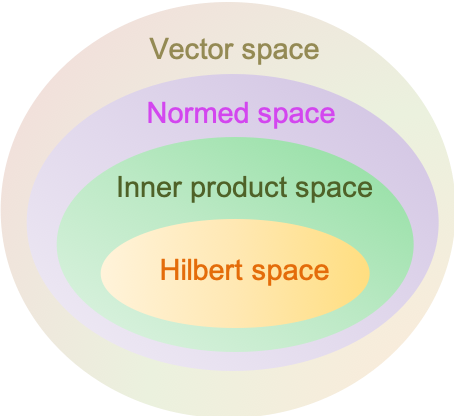An inner product space is a vector space with an inner product.

An inner product is an operation that assigns a scalar to a pair of vectors , or a scalar to a pair of functions
. The way to assign the scalar may be through the matrix multiplication of the pair of vectors, for instance
or it may be through an integral of the pair of functions:
You may notice that eq3 resembles a dot product. The dot product pertains to vectors in , where
, which can be extended to
-dimensions, where
, and to include complex and real functions,
. Therefore, an inner product is a generalisation of the dot product.
An inner product space has the following properties:
-
- Conjugate symmetry:
- Additivity:
- Positive semi-definiteness:
, with
if
- Conjugate symmetry:

Question
i) Why is the inner product space positive semi-definite?
ii) Show that orthogonal vectors are linearly independent.
iii) Prove that .
Answer
i) A general vector space of can be positive or negative. The inner product space is defined such that
, with
if
, which is useful in quantum mechanics.
ii) Let the set of vectors in eq1 be orthogonal vectors. The dot product of eq1 with
gives
. Since the magnitudes of orthogonal vectors are non-zero,
. Hence, orthogonal vectors are linearly independent.
iii) Let’s consider two vectors and
as position vectors starting from the origin. Then the vector
forms a triangle with them. According to the law of cosines, we have:
Substituting into the above equation gives:
which completes the proof.
Two functions (or two vectors) are orthogonal if . Elements of a set of basis functions are orthonormal if
where
In other words, two functions (or two vectors) are orthonormal if they are orthogonal and normalised.
Finally, the norm (or length) of a vector is denoted by
and is defined as
. With this association of inner product and the length of a vector, we can relate the inner product
and the Euclidean distance
between 2 vectors
and
. Using the
space as an example, where
and
, we have
Hence, the norm naturally comes from the inner product, i.e. every inner product space is a normed space, but not vice versa.